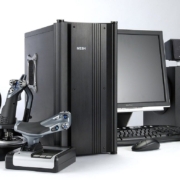How Staff Automation Enhances Employee Satisfaction
In today’s competitive business landscape, employee satisfaction is a critical factor for organizational success. Happy employees are more productive, engaged, and likely to stay with a company long-term. One of the most effective strategies for improving employee satisfaction is through the implementation of staff automation. By streamlining processes and reducing mundane tasks, staff automation can significantly enhance the work experience for employees. This article explores the various ways in which staff automation contributes to higher employee satisfaction and overall workplace morale.
Understanding Staff Automation
Staff automation refers to the use of technology to perform repetitive or manual tasks that traditionally require human intervention. This can include automating data entry, scheduling, customer support, and various administrative functions. The goal of staff automation is to improve efficiency, reduce errors, and free up employees to focus on more meaningful work.
The Connection Between Staff Automation and Employee Satisfaction
At its core, the relationship between staff automation and employee satisfaction is rooted in how automation impacts daily work experiences. When employees are burdened with repetitive tasks, their motivation and job satisfaction can decline. By automating these tasks, organizations can create an environment that fosters engagement, creativity, and job fulfillment.
Key Benefits of Staff Automation for Employee Satisfaction
1. Reduction of Mundane Tasks
One of the most immediate benefits of staff automation is the reduction of mundane, repetitive tasks that can lead to employee burnout. Tasks such as data entry, payroll processing, and scheduling are often time-consuming and tedious.
By automating these processes, employees can redirect their energy toward more strategic and fulfilling activities. This shift not only enhances job satisfaction but can also lead to improved performance and innovation.
2. Increased Time for Meaningful Work
When staff automation takes care of routine tasks, employees have more time to engage in meaningful work that aligns with their skills and interests. This can include creative problem-solving, project management, and collaboration with colleagues.
Employees who feel that their work is meaningful are more likely to be satisfied with their jobs. They are also more likely to feel valued and recognized for their contributions, which further enhances their overall satisfaction.
3. Improved Work-Life Balance
Staff automation can play a significant role in improving work-life balance. Automation tools can simplify scheduling, making it easier for employees to manage their workloads and personal commitments.
For example, automated scheduling systems can allow employees to request time off or swap shifts with minimal friction. This flexibility helps employees maintain a healthier work-life balance, contributing to higher job satisfaction.
4. Enhanced Collaboration and Communication
Effective communication and collaboration are vital for workplace satisfaction. Staff automation tools often include features that facilitate better communication among team members.
For instance, project management software can automate task assignments and updates, ensuring that everyone is on the same page. Enhanced collaboration tools can also make it easier for employees to work together, share ideas, and contribute to projects, fostering a sense of community and belonging.
5. Opportunities for Skill Development
Implementing staff automation can create opportunities for employees to develop new skills. As routine tasks become automated, employees can invest their time in learning new technologies or enhancing their existing skills.
Organizations can support this by providing training programs and resources that encourage employees to take advantage of these opportunities. Employees who feel supported in their professional development are more likely to be satisfied and engaged in their work.
6. Greater Job Security
In an era where job security is often uncertain, staff automation can help create a more stable work environment. By automating low-value tasks, organizations can focus their resources on core competencies and strategic initiatives.
This focus can lead to business growth and, ultimately, job security for employees. When employees feel secure in their positions, their job satisfaction naturally increases.
7. Recognition and Reward
Staff automation can also enhance employee satisfaction through recognition and reward systems. Automation tools can track performance metrics and achievements, making it easier for managers to recognize and reward employees for their contributions.
When employees receive recognition for their hard work, they are more likely to feel valued and satisfied in their roles. Automated systems can streamline the feedback process, ensuring that employees receive timely and constructive feedback.
8. Reduced Stress and Frustration
Repetitive tasks can lead to stress and frustration among employees. By automating these tasks, organizations can help alleviate some of this pressure.
Employees who are not bogged down by tedious work are generally more relaxed and focused. This reduction in stress can improve overall job satisfaction and contribute to a more positive workplace culture.
9. Enhanced Employee Engagement
Staff automation can lead to greater employee engagement by freeing up time for employees to participate in initiatives that matter to them. With more time available, employees can engage in team-building activities, brainstorming sessions, and other collaborative efforts that foster a sense of belonging.
Engaged employees are more likely to be satisfied with their jobs, as they feel connected to their work and their colleagues.
Implementing Staff Automation for Maximum Impact
To maximize the benefits of staff automation on employee satisfaction, organizations should consider the following strategies:
1. Assess Organizational Needs
Before implementing staff automation, conduct a thorough assessment of your organization’s needs and workflows. Identify tasks that are repetitive and time-consuming, and determine which processes would benefit most from automation.
2. Involve Employees in the Process
Employee buy-in is crucial for the successful implementation of staff automation. Involve employees in discussions about automation initiatives and seek their input on which tasks they find most burdensome. This collaborative approach can help ensure that the automation solutions align with their needs.
3. Provide Training and Support
Once automation tools are in place, provide comprehensive training and support to help employees adapt to the new systems. Ensure they understand how to use the tools effectively and encourage them to ask questions.
4. Monitor and Evaluate Performance
After implementing staff automation, continuously monitor its impact on employee satisfaction and productivity. Gather feedback from employees to identify areas for improvement and make necessary adjustments.
5. Foster a Culture of Innovation
Encourage a culture that embraces innovation and automation. Celebrate successes and recognize employees who contribute to the implementation process. This positive reinforcement can motivate others to engage with automation initiatives.
Conclusion
Staff automation is a powerful tool for enhancing employee satisfaction by reducing mundane tasks, increasing time for meaningful work, and fostering a positive work environment. By implementing smart automation solutions, organizations can create a more engaged and satisfied workforce, ultimately driving business success.
As technology continues to evolve, embracing staff automation will be essential for organizations looking to remain competitive and improve employee experiences. In a world where employee satisfaction directly impacts organizational outcomes, investing in staff automation is not just a strategic move; it’s a necessity.Read More











Leave a Reply
Want to join the discussion?Feel free to contribute!